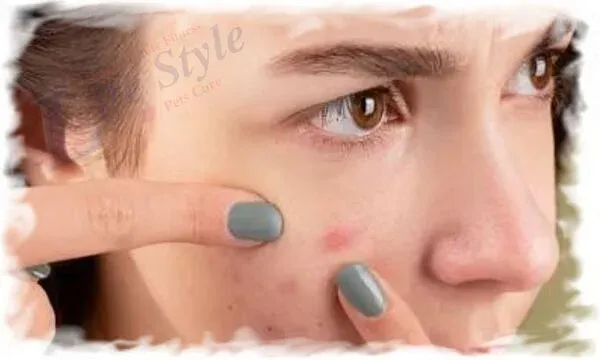What is acne?
Chronic inflammation of the pilosebaceous unit causes acne. The arrector pili muscles, the sebaceous glands connected to it, and the hair follicle make up this unit.
Acne is assumed to come from excessive sebum production caused by sebaceous gland hyperplasia. This response results in hyperkeratinization of the hair follicle, obstructing the strand and creating a microcomedo by blocking normal follicular keratinocyte shedding.
One of the most prevalent dermatologic conditions worldwide is acne. Although acne may affect anyone at any age, research has shown that postpubescent adolescents are the age group where it most frequently occurs. Men are more commonly and seriously afflicted than women.
This condition must be treated early and efficiently to reduce mental and physical side effects. It could leave both physical and emotional wounds.
Anxiety, diminished self-esteem, sadness, and suicidal thoughts are examples of emotional aftereffects. With hyperpigmentation, long-term physical effects might range from moderate to severe scarring. Acne is more prevalent on the face, back, chest, and shoulders.
Bacteria, abnormally shedding hair follicles, excessive oil production, and androgynous hormones like testosterone can all contribute to acne. Age and skin friction are further factors.
Excessive hormone production, some testosterone drugs, certain foods like milk, chocolate, and bread, and stress are all potential acne-causing factors.
Although it is difficult to completely avoid acne, there are several ways to minimize it. The use of non-comedogenic (acne-preventing) cosmetics, moisturizers, sunscreens, and cleansers can be beneficial. Additionally, avoiding touching the face is beneficial since doing so increases the amount of dirt and oil that is applied to the skin. Avoid popping, squeezing, and picking pimples since this can worsen scarring and cause infections.
Acne treatment recipes
Acne may be avoided by gently cleaning your face with soap and water twice daily and after exercise. However, it won't get rid of the current acne. Scrubbing your face harshly can damage your skin, make acne worse, and lead to other skin issues.
Mild acne can be treated with benzoyl peroxide, which is sold in creams, gels, lotions, and washes. It is believed to function by eliminating the germs linked to acne. It takes this drug roughly a month to start working, and it must be taken consistently.
Salicylic acid, which is available in creams, lotions, and pads, assists in addressing the issue of uneven cell shedding. Pores can be cleared by mild acne to treat lesions. It must be used continuously because, unlike benzoyl peroxide, it does not reduce sebum production or eradicate bacteria.
Topical acetone dehydrates the skin whereas topical alcohol has a modest antibacterial effect. Dermatologists often do not advise these substances, which are used in many acne treatments but offer very little help and dry up the skin.
Topical retinol gel reduces the development of acne by altering cell proliferation and reducing inflammation.
Oral and topical antibiotics reduce acne-causing bacteria and inflammation, but they have little effect on the other causes of acne. The skin is not readily penetrated by topical antibiotics, which are available as creams, gels, lotions, pads, and solutions. This prevents them from treating deeper infections. Systemic antibiotics are effective for treating severe acne and do reach the sebaceous glands.
Azelaic acid can treat acne and is typically used to treat rosacea. It is available as a topical gel or cream. Similar to topical medicines, azelaic acid has both anti-inflammatory and antibacterial effects. Dapsone gel is another topical gel with comparable effects.
Because it affects the causes, isotretinoin is the most successful therapy for severe cystic acne. Some severe side effects of this medicine include an elevated risk of depression, inflammatory bowel disease, and serious birth abnormalities. Dry skin and lips, high triglycerides, headaches, joint and muscular discomfort, and hair loss are among the less serious side effects.
Derivatives of vitamin A are also offered as oral and topical treatments. Moderate to severe acne is treated with topical compositions that alter how skin develops and sheds. These are frequently used with other acne treatments, including oral antibiotics and benzoyl peroxide. These topical treatments might have undesirable side effects, such as dryness, itchy skin, and redness.

